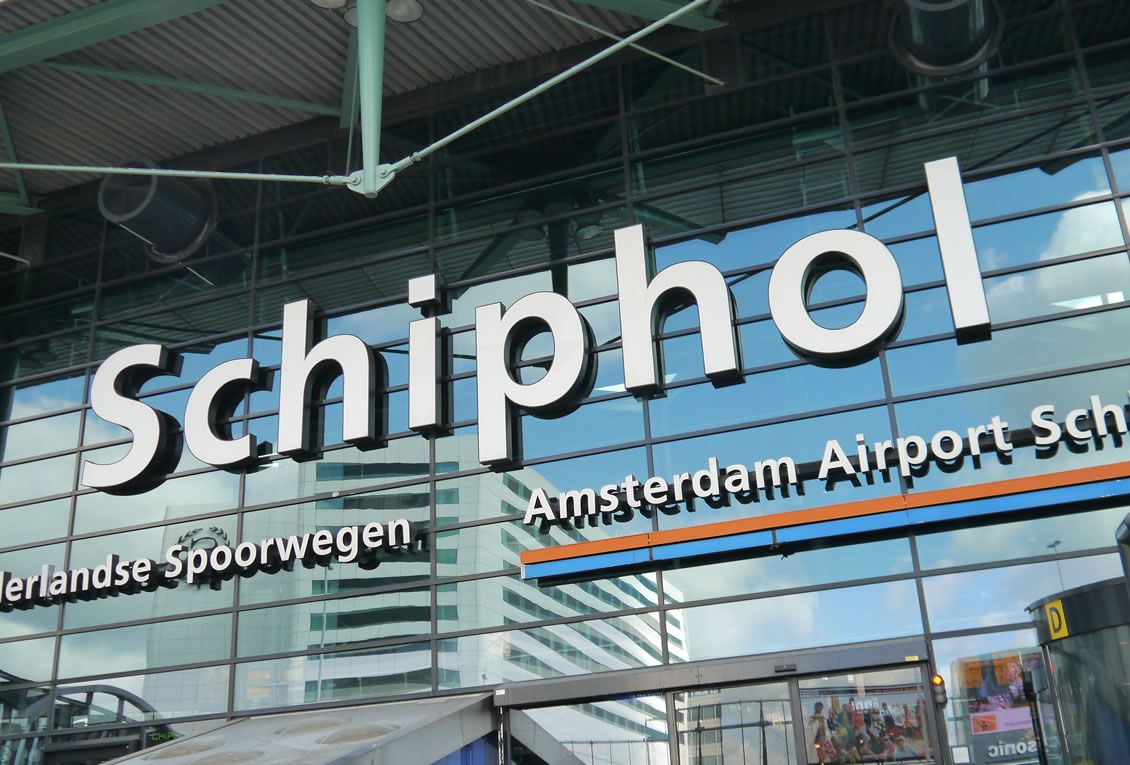Amsterdam
Today many cities can pride themselves of being LGBT-friendly, same sex marriage is legal in many western countries and the presence of a lively and active gay community is considered a sign of a thriving cultural and varied metropolis.
But it wasn’t always the case. In the early part of the 20th century Amsterdam represented a beacon of tolerance and freedom in a very repressed and bigoted Europe: the first gay bar opened in 1927. After the war the city quickly re-acquired that title with the first LGBT association founded in 1946 and in the 60s and 70s it was one of the few places in the world to not just tolerate but legally protecting and promoting LGBT rights. It is not a coincidence that the Netherlands were the first country to legislate for same sex marriage in 2001.
So that’s what makes this city special – others may be louder and glitzier today, but Amsterdam got there first. And it still has its mojo.
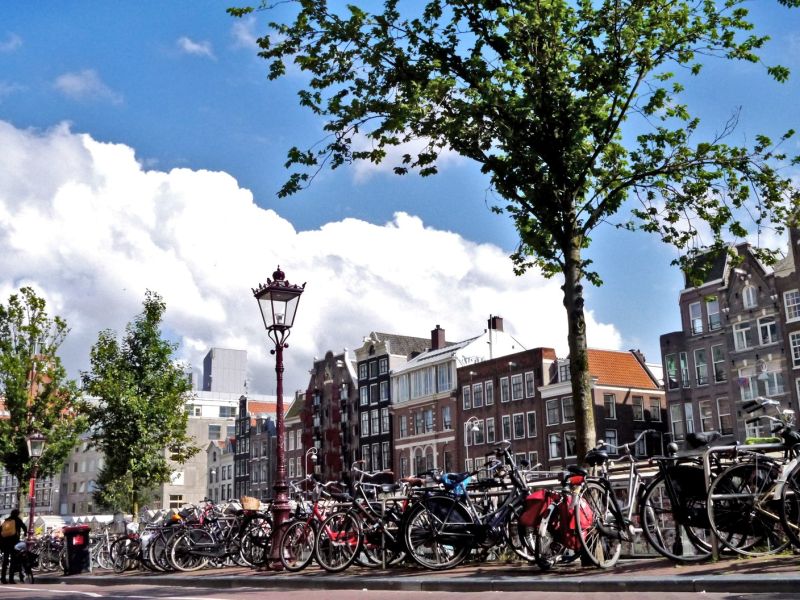
Photo Credit: Paul Lee-Maynard
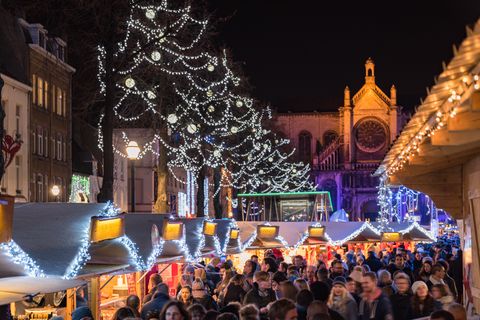
When to visit
Amsterdam is very close to the North Sea and its vicinity mainly determines its weather. Winter can be very cold, windy and wet at times, with snow not infrequent. Spring is a magical season in the Netherlands, with millions of colourful bulbs and flowers. Summers are characterised by very long hours of sunlight and the city comes alive along its canals on the beautiful evenings. Autumn is when the tree-lined canals turn orange and red in a stunning parade of colours.
Discover and enjoy...
If you have never been here before, make sure you don´t miss the main sightsAnd whether it´s your first time or you´re coming back again, we think you´ll enjoy these hot tipsor take that special vacation selfie
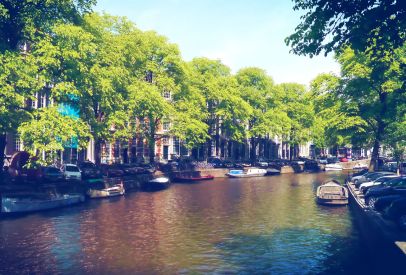
If it's your first time, you want to visit these unforgettable bucket-list sites.
- The Van Gogh Museum. No visit to Amsterdam is complete without a visit to this iconic museum dedicated to the Dutch impressionist master.
- Cruise the canals. There are more than 100 Km of canals in central Amsterdam and 1,500 bridges. Nothing is more quintessential Dutch than getting on a boat and see the city from this perspective.
- Visit Anne Frank's House. One of the most poignant and profound experiences in the city. A total of 107,000 Jewish citizens were deported during the Nazi occupation and just 5,000 survived.
- The Rijksmuseum is one of the world's largest art collections with 8,000 pieces, including the masterpieces of Vermeer and Rembrandt. Lose yourself in 1.5 Km of incredible galleries on four levels.
- Wander in the beautiful Vondelpark. This huge 47 hectars park is Amsterdam pride and joy. Holding a special place in the city's heart, here you will find some manicured lawns, ponds, quaint cafes, charming footbridges and winding paths.
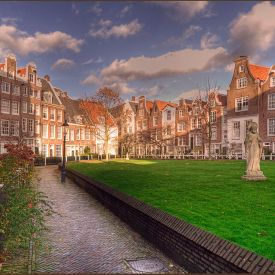
One of the most extraordinary places in the centre of Amsterdam is to be found behind a portal on Spuiplein. It leads to the Begijnhof (Beguinage), a medieval inner courtyard where the women of the Catholic sisterhood lived. The Beguinage was established sometime in the 14th century to house the Begijnen. These women lived like nuns but were more independent and had more freedom. Whilst the Catholic faith was banned in the 16th century, the Begijnhof was the only Catholic institution that continued to exist because the houses were the private property of the women. However they had to relinquish the chapel that was here, so the women built a ‘secret church’ , hidden behind the facades of several residences.

Amsterdam is renowned for being a welcoming city for the LGBT+ community. It is a great idea to walk around the centre and find along the way the past and the present of the movement. Start at the Homomonument, which stands beside the Westerkerk and was the first monument dedicated to the struggle of the community when it was inaugurated in 1987. And to remind us of that struggle you just have to walk a few hundred metres and pass by Dam Square, where in the 17th and 18th century sodomites were routinely hanged. Enjoy a beer or two in the Reguliersdwarsstraat, one of the city's LGBT+ hubs, or the Warmoesstraat, where the 'harder' scene was once located. And stop at 63 Zeedijk, where 't Mandje is one of the oldest LGBT+ cafes in the world, since 1927.
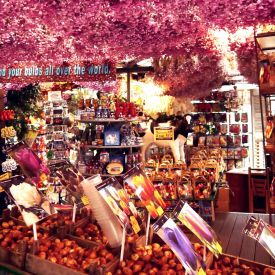
The Netherlands are rightly famous for being a mecca for flowers and plants lovers. And even in a city like Amsterdam, there are plenty of opportunities to appreciate this Dutch passion. Start with the floating Flower Market, in the centre of the city: it may be a bit touristy, but you can find some amazing bulbs and seeds to take home (though beware of your country's regulation if visiting from outside the EU). A beautiful hidden garden is the Hortus Botanicus, which is near the Waterlooplein. This lovely and romantic botanic garden is one of the oldest in the world and was founded in 1638 to cultivate medicinal herbs. If you want to learn more about the country's obsession with tulips, visit the Tulip Museum, not far from Anne Frank's House, where you can learn the history of one of the Netherlands best known symbols.

We firmly believe that food is key to understand a city and its dwellers. And Amsterdam is no exception. If you're brave enough, you may want to try raw herrings, which you can buy from many street carts all around the city. The locals have been eating them for 600 years, but we agreed that they're not everyone's taste. For something a bit more classic, try the deliciuos Gouda, Geitenkaas or Maasdammer cheeses - they also come in many flavours and some varieties are also aged, smoked, etc. Another delightful snack is croket, a deep fried croquette with meat (usually veal) inside, covered in breadcrumbs. And to close, the Dutch are great at desserts: try their amazing pancakes, poffertjes, oliebollen - and the superb Dutch apple pie... you can't go wrong.
The strong Indonesian influence on Amsterdam’s food scene can be felt all over the city, and no culinary tour of Amsterdam would be fully complete without a visit to an Indonesian restaurant. Order a rijsttafel (rice table) for the true Indish-Dutch experience.
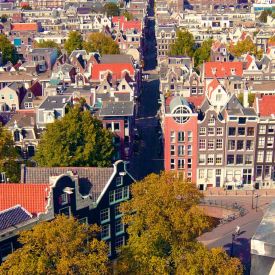
The Jordaan is a district in the centre of Amsterdam, famous for its beautiful 17th century houses, hip restaurants and original shops. Come on a Monday morning and you will find the charming Westerstraat market where outdoor vendors sell fabrics, clothing & various bric-a-brac. On Saturdays, the Lindenmarkt is probably the best food market in Amsterdam and the Noordermarkt offers locally grown produces. However, any day is good to walk around this lovely neighbourhood, stop for a coffee and a slice of delicious Dutch apple pie and browse in the many antique and unique fashion shops here. Believe it or not, this now fashionable and trendy area of Amsterdam was once quite unsalubrious and there was even a plan to raze it to the ground and rebuild it entirely. Thankfully that didn't eventuate and we can still enjoy this beautiful old part of the city.
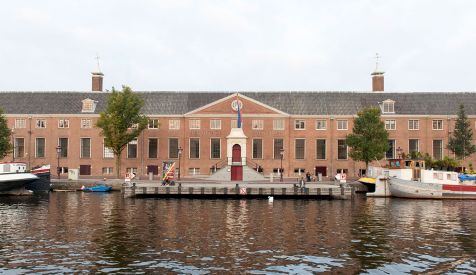
Relationship with Russia might not be at their best now, but the Netherlands have some historical ties with this country. An expression of these ties is the Hermitage Amsterdam, which is a branch of the famous museum in St. Petersburg - in fact, the biggest one at 12,846 m2 (138,270 sq ft).The museum, inaugurated in 2009, a time of somehow happier relations with Russia, is located in the former Amstelhof, a classical style building from 1681. Today and because of the current political climate, the museum operates independently from the Russian counterpart and houses some spectacular exhibitions, focusing especially on the Dutch masters and the Impressionists.
Planes, trains and automobiles...
Amsterdam is served by one of Europe’s largest hubs, Schiphol Airport. situated less than 10 km south of the city.
It has one large terminal, with three large departure halls, connected land and air side. Some low-cost carriers have moved some of their flights to other Dutch airports, such as Rotterdam or The Hague, which are connected to Amsterdam by rail.
There is a rail station at Schiphol airport, which connects not just with the city (in about 20-30 minutes) but also other key destinations in the Netherlands and beyond.
The main rail station (Central Station / Centraal) is the hub of Amsterdam’s transport network and in fact an imposing neo-gothic building that is a landmark in itself.
Amsterdam is a pretty easy city to navigate, especially if planning to remain within the city centre. Most places are reachable on foot or, for a quintessential Dutch experience, by bicycle (cycles can be rented from most hotels). Otherwise public transport is managed and run by GVB. Trams are ubiquitous in Amsterdam and are the fastest way to get from A to B. Amsterdam's metro system radiates from Central Station to the city's outlying districts.
Its four routes are often the fastest way to reach districts like Bijlmer, Amstelveen and Diemen. In the city area chip cards (OV-chipkaart) are used. There are disposable one-hour cards or also day-cards that can be valid from one to seven days and can be purchased from the bus/tram conductor out driver. There are also I amsterdam City Cards, entitling to free entrance to the city's top attractions, plus unlimited use of the GVB public transport system for 24, 48 or 72 hours. These have to be purchased before travelling to Amsterdam and the cards can be sent to your home address or collected on arrival in the city.
The Scene
Like in many other world cities the scene is quickly evolving from having regular venues and weekly event nights to a series of more or less regular parties, sometimes held in different venues. Amsterdam is no exception to that. There are a lot of long-running events like Rapido and its new spin-off Funhouse, held at fixed dates and (of course) whenever there is a long weekend.
It is worth noting that in a super-accepting and uber-tolerant city like Amsterdam there are also a lot of parties, including some quite racy ones, that are not necessarily gay-only but are open to everyone, whatever their (often fluid) sexuality.









